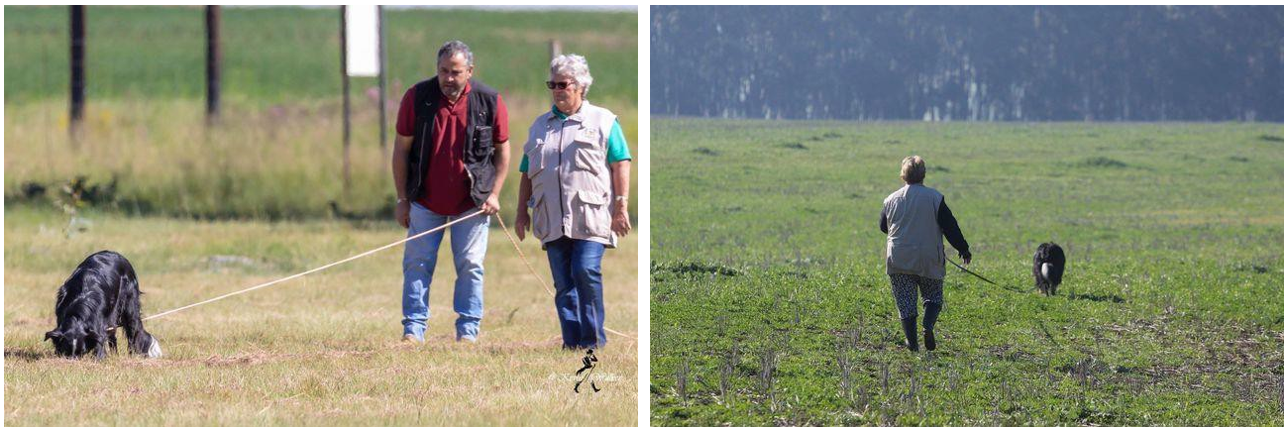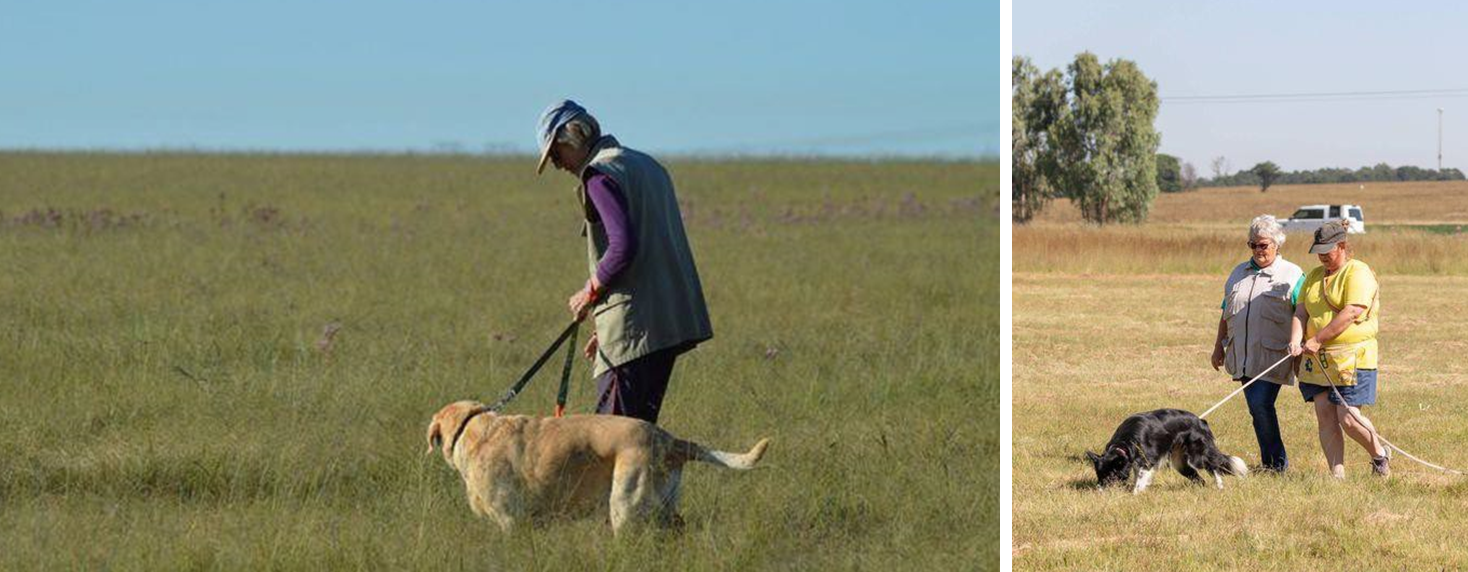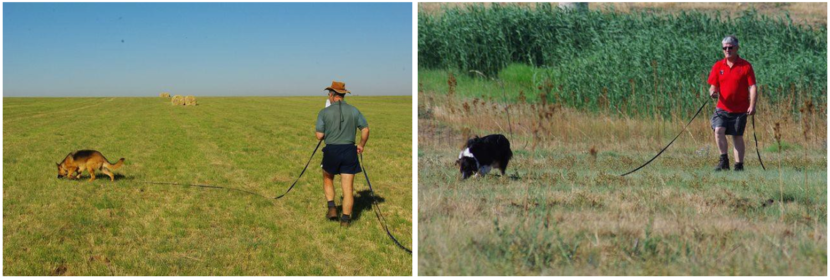Tracking
The below information is for club tracking and differs from competitive tracking at a KUSA level.
Tracking refers to a dog’s ability to detect, recognise and follow a specific scent or odour. Scent or odour is the combined permeations of trampled vegetation, bugs, mud, and soil disturbed by an individual’s footprints.
The disturbed soil releases moisture and trampled plant life release odours. Footprints release new odours different to undisturbed vegetation surrounding it.
The tracklayer is a person laying the track that a dog will follow. For Dogs in the Junior 1 and higher classes, this person will, as far as possible, be a stranger to the dog for which he lays the track. The tracklayer will drop articles on his track.
Articles will not be hidden or buried. On all tracks the last (or only) article is to be dropped at the end of the track. The age of the track is to be calculated from the time that the tracklayer begins the laying of the track.
Handlers will stay away from the tracking area until the time approaches for each to begin his track.
Tracking requires a vast open area to train in and takes a few hours to complete. It is not for handlers who love to sleep in on a Saturday morning, as tracking starts very early!
At Club Level, there are 7 tracking levels which becomes progressively more difficult as the dog masters each.
Puppies 1
Puppies 2
Beginners
Junior 1
Junior 2
Senior
Veteran
Tracking assessments contain the following:
Heel work (Not for Puppies 1 & 2)
Send away
Controlled search
Retrieve
Down stay
Track on lead
Class size: Maximum number of dogs are limited to 12
Handlers MUST be prepared to enter one KUSA Tracking Trial (“TT”) show once the dog is ready (trainer to determine this) and attempt a Working Trails Tracker Dog 1 (“TD1”) competition once the dog has passed Companion Dog (“CD”) at KUSA level.



